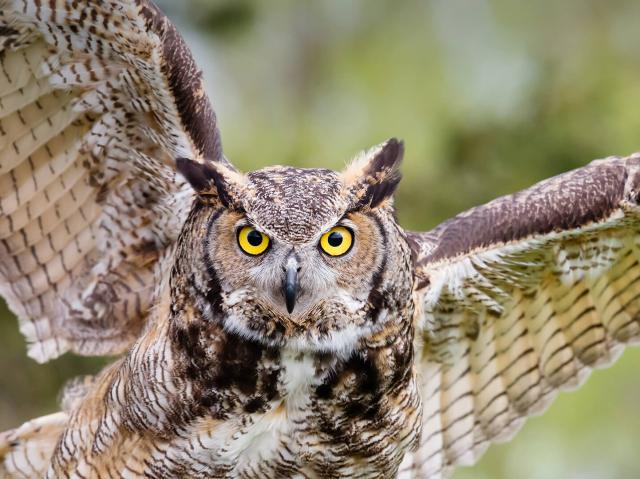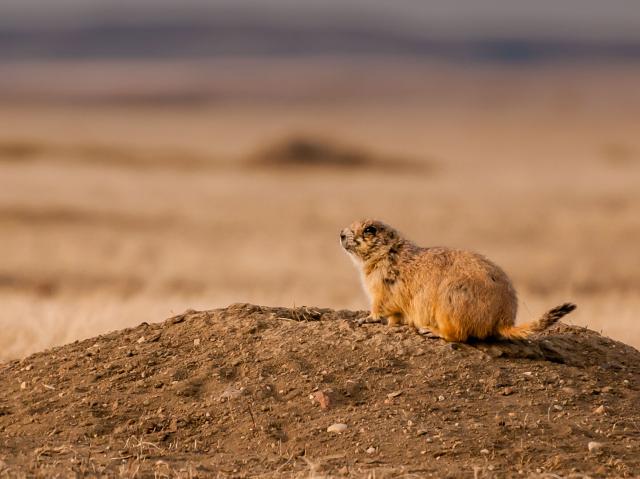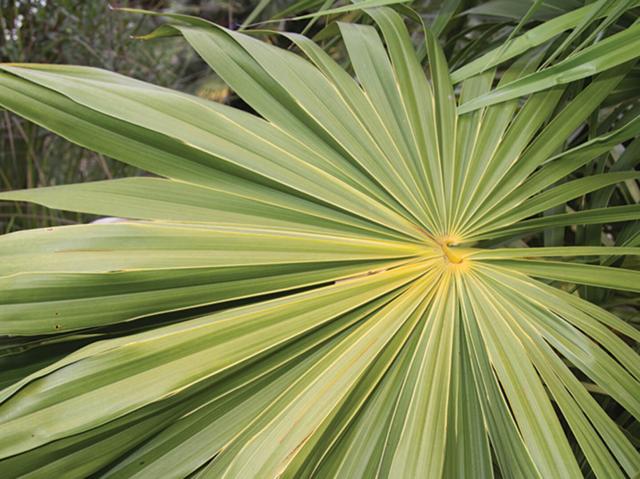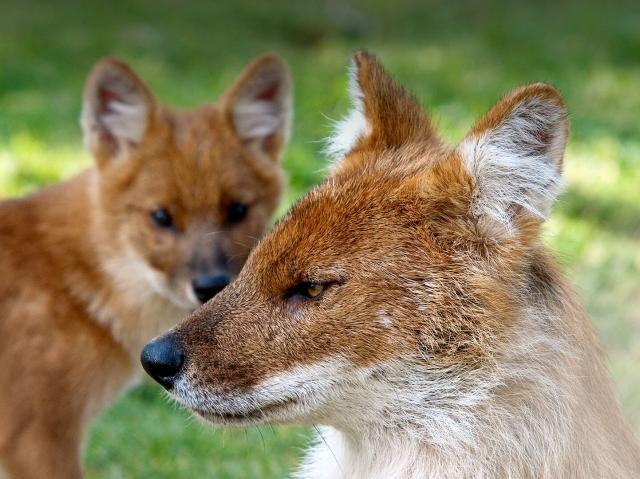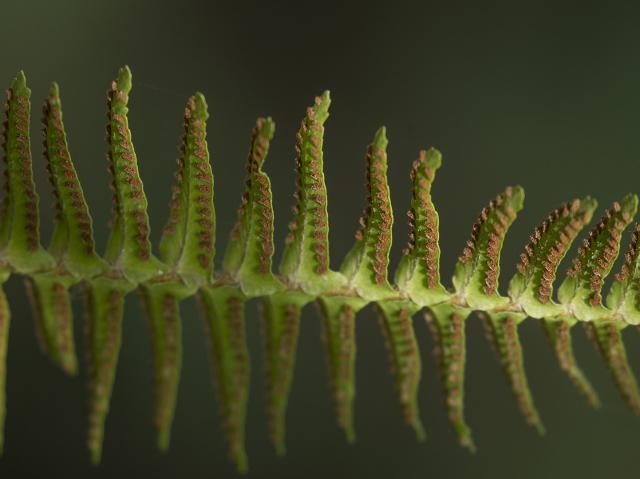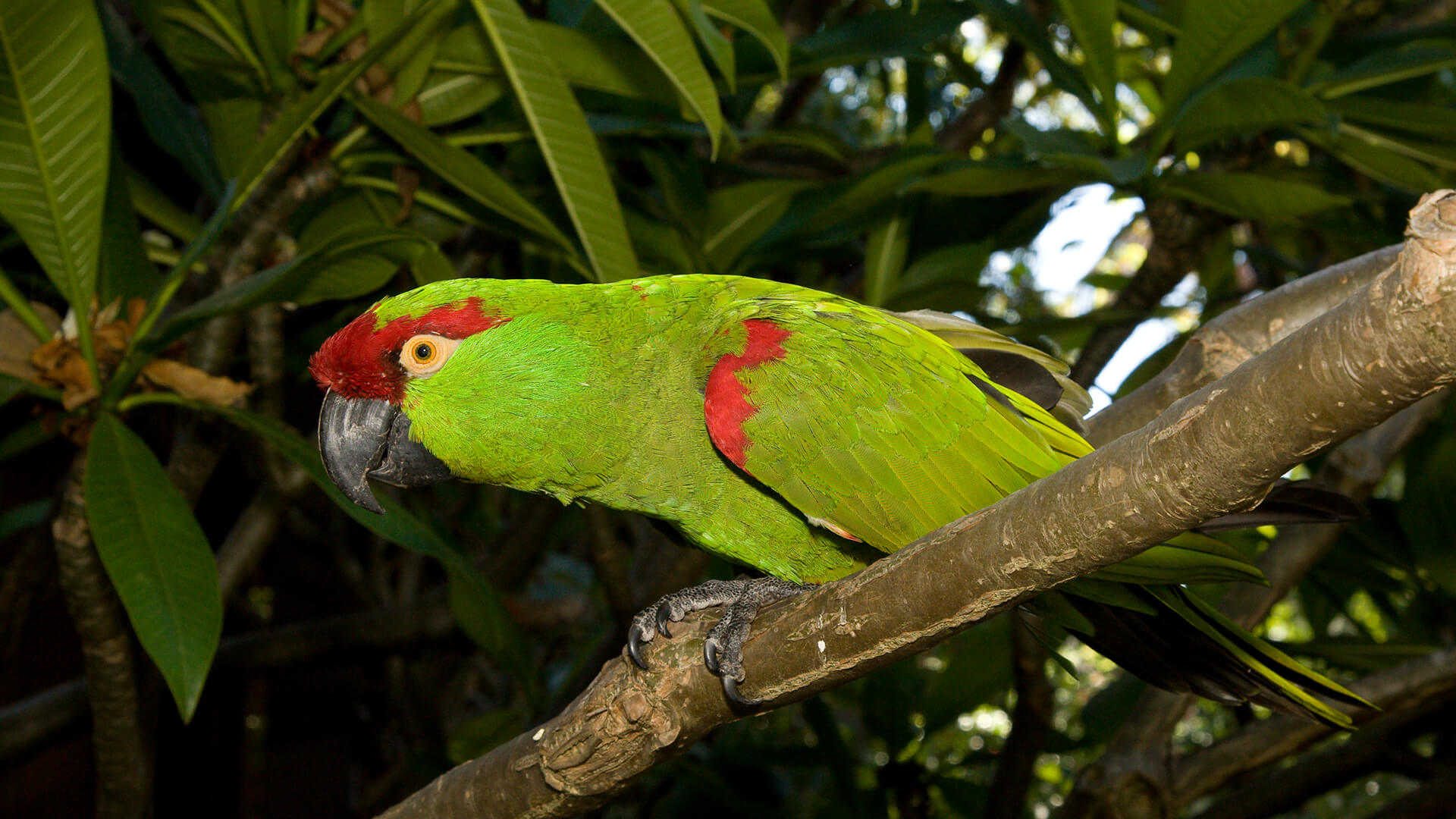
Thick-billed Parrot

- CLASS: Aves (Birds)
- ORDER: Psittaciformes
- FAMILY: Psittacidae
- GENUS: Rhynchopsitta
- SPECIES: pachyrhyncha

ABOUT
Snow parrots: Think parrots live only in tropical climates? Endangered thick-billed parrots prefer higher elevations and make their home in the pine forests of northern Mexico. Because of their choice of habitat, they are sometimes called snow parrots or cold-weather parrots. The thick-billed parrot’s apple-green coloring helps it blend in with the pine needles in the forest. The birds also have poppy-red markings on the head and on the bend of the wing and lower leg, and their eyes are ringed with lemon-yellow skin that is bare of feathers.
These birds are powerful flyers that can usually escape from larger birds of prey. Thick-billed parrots are even able to outmaneuver peregrine falcons by diving toward the ground and flying into trees the falcons will not enter. Their seasonal migrations can cover up to hundreds of miles, but not all thick-billed parrot flocks migrate. Although they have not been tracked along the entire route, it is believed that the thick-bills have the ability to make the trip in one nonstop flight.
Thick-bills are noisy in their large flocks and alert other members of the flock if predators are near, with sharp cries. Still, thick-billed parrots fall prey to goshawks, red-tailed hawks, and ring-tailed cats.
HABITAT AND DIET
Although these parrots do visit lower elevations, thick-bills spend most of their time at higher altitudes, from 3,900 to 11,500 feet (1,200 to 3,500 meters). When it snows, they visit lower altitudes but return to their lofty habitat for food and nesting.
The thick-billed parrot’s main food item is pine seeds (piñon nuts), although they do eat other seeds, berries, fruit, insects, and tree bark. Its sturdy beak can crack even the hardest nut shell, and the bird can perch on one thick, strong foot while using the other like a hand to hold and turn the stubborn nut.
To get at the pine seeds, a parrot shreds the pinecone with its beak, starting at the base, and removes each seed as it works its way to the tip of the cone in a spiral fashion. This is a very complicated process that parents must teach their chicks over time; this can take up to several months! Pine seeds are such an important part of this birds’ diet that their breeding cycle matches the peak pine seed production.
At zoos, thick-billed parrots are offered pine nuts (with and without shells), walnuts, almonds, a commercial pellet made especially for parrots, and a variety of fruits and vegetables.
FAMILY LIFE
Like other parrots, thick-billed parrots are intelligent, curious, and social birds, living together in flocks all year. Records from the past tell us of sightings of flocks numbering in the thousands; however, current flock sizes range from 12 to 1,000 birds. Within the flock there is a particular "pecking order" and rules each parrot must follow. Thick-billed parrots are quite noisy: their calls to each other in flight sound like children laughing.
All nesting activity takes place at higher elevations, possibly because the preferred pine trees are found at those elevations. The parrots build their nests in the cavities of dead or decaying trees, preferring to use old woodpecker holes or abandoned flicker nesting holes, which the birds enlarge by chewing the wood.
Thick-billed parrot chicks develop slowly and are cared for by both parents. They stay in the nest for two to three months before they fledge and learn to fly, and the parents continue to feed them for a short time while they learn to forage for themselves.
An adult male and female may stay together as a pair for life. In 2006, scientists in Madera, Chihuahua, Mexico, found that many nesting pairs shared trees, with up to three nests per tree.
CONSERVATION
The thick-billed parrot population has dropped since the early 1900s. Although its range once included southern areas of Arizona and New Mexico south to Venezuela in South America, it is now found mostly in the Sierra Madre Occidental Mountains of northern Mexico. Estimates suggest there are just 3,000 to 6,000 of the parrots in the wilderness, with fewer than 1,000 breeding pairs. What has happened? Hunting and logging in the parrots' pine forest habitat, disease, and the illegal capture of birds for the pet trade are the greatest threats facing thick-billed parrots today.
It is believed that half of the world's thick-billed parrots live in a 6,000-acre (2,400-hectare) tract of forest in Chihuahua, Mexico, which is the birds' most important nesting area. In 2000, a private group that owned the land agreed to stop logging in the area, and plans are underway to develop a certified sustainable timber harvest and build cabins for ecotourists.
San Diego Zoo Wildlife Alliance participates in the Association of Zoos and Aquariums’ Species Survival Plan for the thick-billed parrot and is part of a group of conservation organizations supporting field studies and working to save the birds' remaining habitat. Artificial nest boxes have been installed to provide suitable nest sites for the birds, and we are now studying health issues affecting the parrots to help with their recovery.
To date, the most concerning observation has been the presence of ectoparasites on chicks and in the nest cavities. Four different types of parasites have been identified. These parasites can be devastating to newly hatched chicks, as many of the bugs are hematophagous (a nice way of saying blood-sucking). It’s thought that increased temperatures and rainfall, often linked to climate change, may be increasing the number of parasitic fly larvae that feed on chicks. This has been recently documented in many chicks in South America and is very concerning.
Our veterinarians have developed treatments for individual birds and their nest cavities, using only organic compounds so as to have the least impact on the forest and all its inhabitants. Obviously, treatment of all chicks and all nest cavities in the nesting area is not possible, but increasing chick survival is a first step in halting population declines.
With their noisy habits and eye-catching plumage, thick-billed parrots are hard to ignore. Today, with a breeding program in place, habitat protection undertaken, and public awareness on the rise, our western mountains just might echo again with the riotous calls of flocking thick-billed parrots!
By supporting San Diego Zoo Wildlife Alliance, you are our ally in saving and protecting wildlife worldwide.
LIFE SPAN
35 to 40 years
YOUNG
Number of eggs laid: 1 to 4
Incubation period: 24 to 28 days
Age of maturity: 7 months
SIZE
Height: 15 to 17 inches (38 to 43 centimeters)
Weight: 11 to 13 ounces (314 to 373 grams)
FUN FACTS
Thick-billed parrots have a call that can be heard up to 2 miles (3.2 kilometers) away.
Smuggling wild parrots into the United States from Mexico for the pet trade is the second-largest illegal border business next to drug trafficking.
The thick-billed parrot is one of only two parrots that once inhabited the United States. The other is the Carolina parakeet, which became extinct in 1918.



